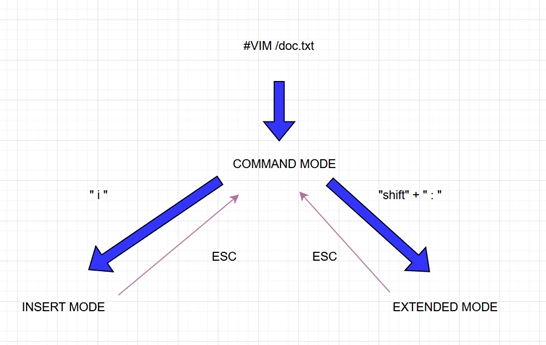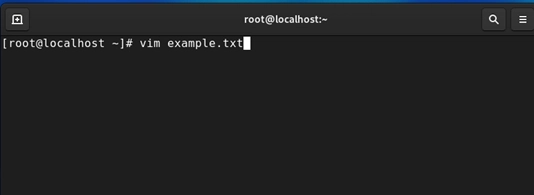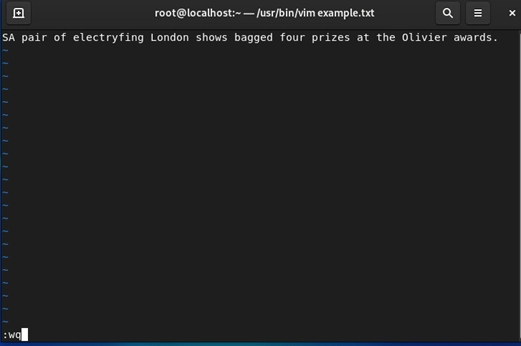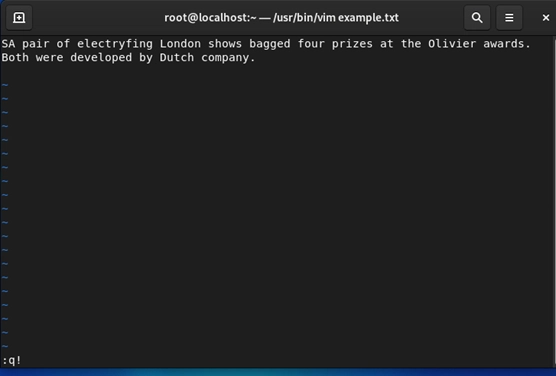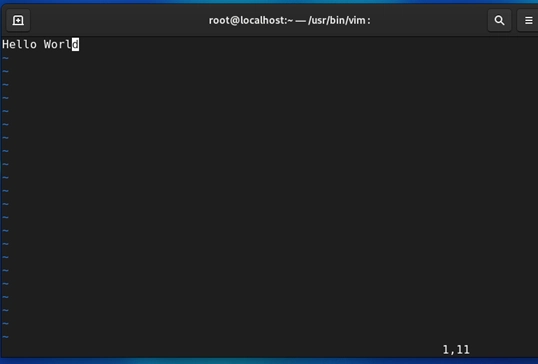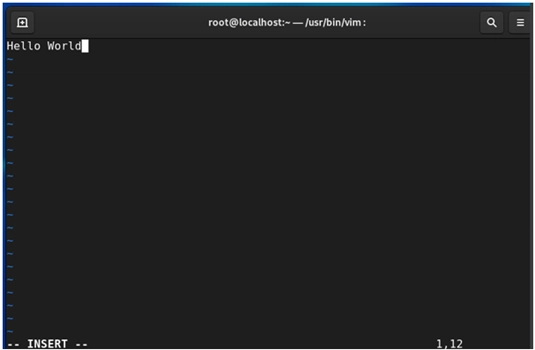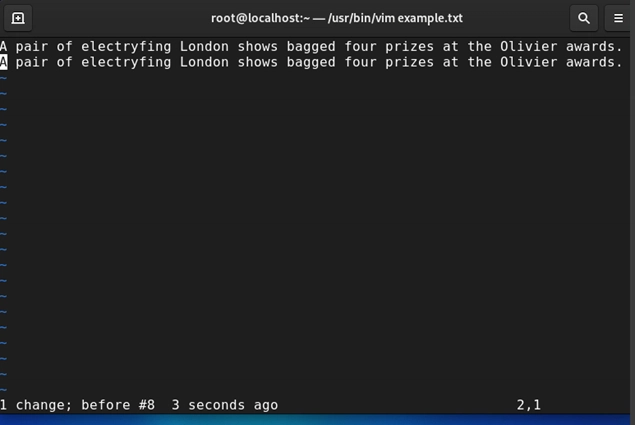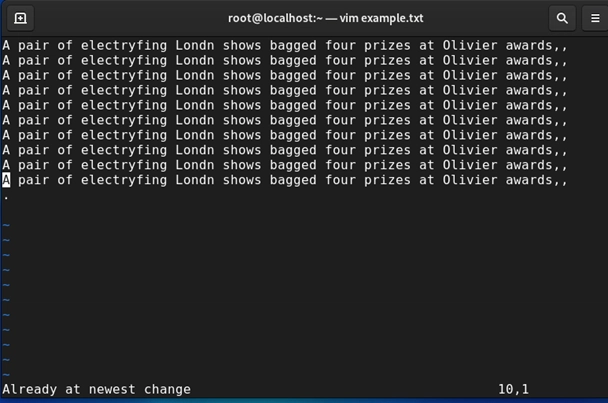How to Start with Vim in Linux Red Hat – A Beginner’s Guide
If you’re diving into the world of Linux, especially with Red Hat, learning Vim is a must. It’s a powerful text editor that’s perfect for editing configuration files, writing scripts, or just working efficiently in the terminal. While it might seem a bit tricky at first, this guide will help you get started without feeling overwhelmed. Table of Contents Introduction to Vim Installing Vim on Red Hat Understanding Vim Modes Basic Commands you'll use often Navigation to Vim Essential Editing Shortcuts Why learn Vim Introduction to Vim What is Vim? Vim is an enhanced version of the classic Vi editor. It’s lightweight, fast, and packed with features like multi-level undo, syntax highlighting, and even multi-window support. Whether you’re editing plain text or writing code, Vim is up for the task. Installing Vim on Red Hat To install Vim on Red Hat-based systems, use the following commands: • For newer systems: • For older versions: Once installed, type vim in your terminal to check if it’s ready to go. Understanding Vim Modes Vim works differently from most editors because it has modes. Here are the three main ones: Command Mode: This is where you navigate and run commands (default mode). Insert Mode: Used for typing and editing text. Enter it by pressing i. Extended Mode: For saving, quitting, and advanced commands. Enter it by pressing : Switching Modes: • Press Esc to return to Command mode. • Press i to enter Insert mode. • Press Shift+: to enter Extended mode. Basic Commands you’ll use often Here are some essential commands to get you started: • Open or Create a File: vim file-name = open the editor • If the file exists, it opens for editing; if not, a new one is created. • Save and exit :wq • Save without exiting :w • Quit without saving :q! Editing Text: • Enter Insert mode by pressing i, type your text, then press Esc to return to Command mode. Understanding Vim Modes Navigating in Vim In Command mode, use these keys to move around: • h: Move left • l: Move right • j: Move down • k: Move up • 0: Jump to the start of a line • $: Jump to the end of a line • gg: Go to the beginning of the file • G: Go to the end of the file Essential Editing Shortcuts Here are some handy shortcuts for editing in Vim: • Copy a line yy • Copy a word yw • Delete a line dd • Delete a word: dw • Undo last change u • Redo last undone action: Ctrl +r • Paste copied content p Summary Why Learn Vim? Sure, Vim has a bit of a learning curve—but once you get used to it, you’ll wonder how you ever worked without it. It’s fast, reliable, and works on any system (even remote servers). Plus, once you master its shortcuts and commands, you’ll save tons of time editing files or writing code. Happy Vimming!

If you’re diving into the world of Linux, especially with Red Hat, learning Vim is a must. It’s a powerful text editor that’s perfect for editing configuration files, writing scripts, or just working efficiently in the terminal. While it might seem a bit tricky at first, this guide will help you get started without feeling overwhelmed.
Table of Contents
- Introduction to Vim
- Installing Vim on Red Hat
- Understanding Vim Modes
- Basic Commands you'll use often
- Navigation to Vim
- Essential Editing Shortcuts
- Why learn Vim
Introduction to Vim
What is Vim?
Vim is an enhanced version of the classic Vi editor. It’s lightweight, fast, and packed with features like multi-level undo, syntax highlighting, and even multi-window support. Whether you’re editing plain text or writing code, Vim is up for the task.
Installing Vim on Red Hat
To install Vim on Red Hat-based systems, use the following commands:
• For newer systems:
• For older versions:
Once installed, type vim in your terminal to check if it’s ready to go.
Understanding Vim Modes
Vim works differently from most editors because it has modes. Here are the three main ones:
- Command Mode: This is where you navigate and run commands (default mode).
- Insert Mode: Used for typing and editing text. Enter it by pressing i.
- Extended Mode: For saving, quitting, and advanced commands. Enter it by pressing :
Switching Modes:
• Press Esc to return to Command mode.
• Press i to enter Insert mode.
• Press Shift+: to enter Extended mode.
Basic Commands you’ll use often
Here are some essential commands to get you started:
• Open or Create a File:
vim file-name = open the editor
• If the file exists, it opens for editing; if not, a new one is created.
• Save and exit :wq
• Save without exiting :w
• Quit without saving :q!
Editing Text:
• Enter Insert mode by pressing i, type your text, then press Esc to return to Command mode.
Navigating in Vim
In Command mode, use these keys to move around:
• h: Move left
• l: Move right
• j: Move down
• k: Move up
• 0: Jump to the start of a line
• $: Jump to the end of a line
• gg: Go to the beginning of the file
• G: Go to the end of the file
Essential Editing Shortcuts
Here are some handy shortcuts for editing in Vim:
• Copy a line yy
• Copy a word yw
• Delete a line dd
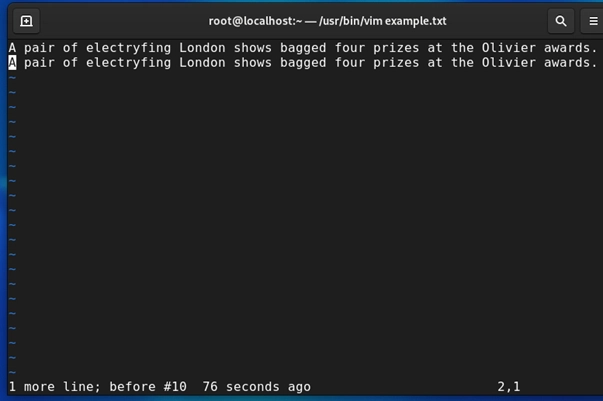
• Redo last undone action: Ctrl +r
• Paste copied content p
Why Learn Vim?
Sure, Vim has a bit of a learning curve—but once you get used to it, you’ll wonder how you ever worked without it. It’s fast, reliable, and works on any system (even remote servers).
Plus, once you master its shortcuts and commands, you’ll save tons of time editing files or writing code.
Happy Vimming!









































































































































































![[The AI Show Episode 144]: ChatGPT’s New Memory, Shopify CEO’s Leaked “AI First” Memo, Google Cloud Next Releases, o3 and o4-mini Coming Soon & Llama 4’s Rocky Launch](https://www.marketingaiinstitute.com/hubfs/ep%20144%20cover.png)
































































































































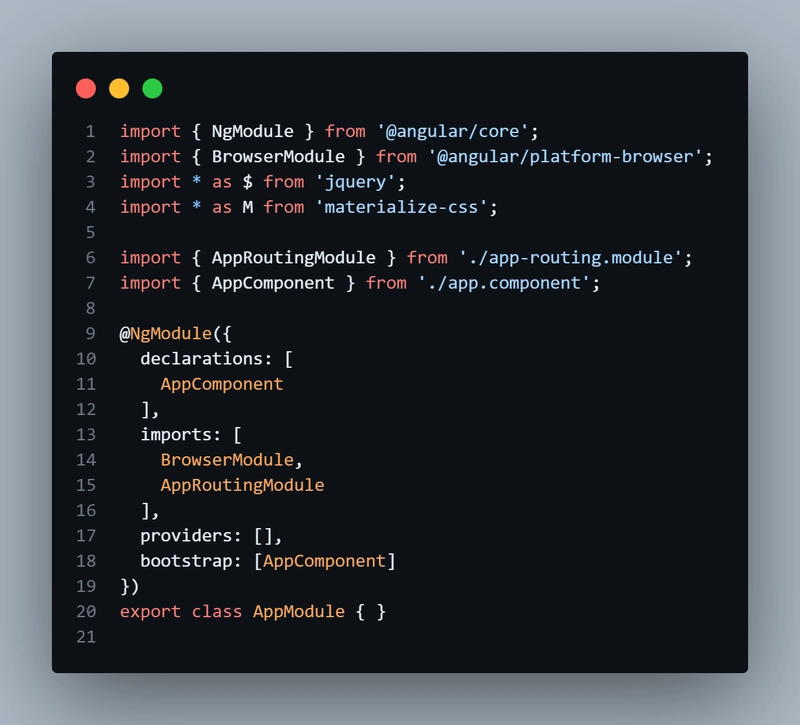

































































![Blue Archive tier list [April 2025]](https://media.pocketgamer.com/artwork/na-33404-1636469504/blue-archive-screenshot-2.jpg?#)































.png?#)









.png?width=1920&height=1920&fit=bounds&quality=70&format=jpg&auto=webp#)




























.webp?#)






















































































![PSA: It’s not just you, Spotify is down [U: Fixed]](https://i0.wp.com/9to5mac.com/wp-content/uploads/sites/6/2023/06/spotify-logo-2.jpg?resize=1200%2C628&quality=82&strip=all&ssl=1)



![[Update: Optional] Google rolling out auto-restart security feature to Android](https://i0.wp.com/9to5google.com/wp-content/uploads/sites/4/2025/01/google-play-services-2.jpg?resize=1200%2C628&quality=82&strip=all&ssl=1)













![Apple Vision 'Air' Headset May Feature Titanium and iPhone 5-Era Black Finish [Rumor]](https://www.iclarified.com/images/news/97040/97040/97040-640.jpg)


![Apple to Split Enterprise and Western Europe Roles as VP Exits [Report]](https://www.iclarified.com/images/news/97032/97032/97032-640.jpg)




































































































































